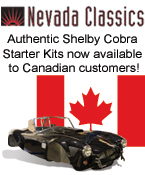 
 Main Menu
Main Menu
|
 Nevada Classics
Nevada Classics
|
 Advertise at CC
Advertise at CC
|
 November 2025
November 2025
|
| S |
M |
T |
W |
T |
F |
S |
| |
|
|
|
|
|
1 |
| 2 |
3 |
4 |
5 |
6 |
7 |
8 |
| 9 |
10 |
11 |
12 |
13 |
14 |
15 |
| 16 |
17 |
18 |
19 |
20 |
21 |
22 |
| 23 |
24 |
25 |
26 |
27 |
28 |
29 |
| 30 |
|
|
|
|
|
|
|
 CC Advertisers
CC Advertisers
|
|

02-26-2010, 04:02 PM
|
|
CC Member

|
|
|
Join Date: May 2006
Location: St. Louisville,
Oh
Cobra Make, Engine: A&C 67 427 cobra SB
Posts: 2,445
|
|

 Not Ranked
Not Ranked

Quote:
Originally Posted by Woodz428

I understand the reasoning for the question and think the comparisons to the Mod motor or Late model Chebby stock engines are irrelevant to that. I think both of those engines underwent substantial high mileage testing, because the mfg's have to warranty their stuff. Something that is probably unlikely with any aftermarket Aluminum block, most I've seen only warranty against mfg. defects. If for no other reason than the number of variables involved. Once you assemble it and add your parts, they are pretty much in the clear, it could be attributed to any number of things other than just the block. I could expound on the amount of miles some of the bike engines that I serviced over the years achieved, but that is hardly applicable. I feel the same way about the comparison to new factory engines.
I'm a big FE fan, but have avoided any aluminum block because of shortage of longterm info. For me, the little extra weight isn't as much of a concern.
|
My reason to point at the aluminum Modulars is basically that aluminum can be used sucessfully, if done right. However the devel is always in the details. You are correct to point out this proves nothing on the FE blocks. A lot of differances between an FE and a modular. Overhead cam verses lifters and pushrods. The size differance matters too. The coeffecient of thermal expansion is multiplied times the distance, so a longer block will grow more than a short one over the same temp change. With than said I still doubt an aluminum FE is goint to wear something out in less than 10K miles, because it is aluminum. However if the engineering is wrong, a lot of bad things could happen.

|

02-26-2010, 04:35 PM
|
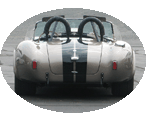 |
Half-Ass Member

|
|
|
Join Date: Jun 2005
Cobra Make, Engine: ERA #732, 428FE (447 CID), TKO600, Solid Flat Tappet Cam, Tons of Aluminum
Posts: 22,025
|
|

 Not Ranked
Not Ranked
Quote:
Originally Posted by olddog

The coeffecient of thermal expansion is multiplied times the distance, so a longer block will grow more than a short one over the same temp change.
|
Absolutely true. Those with an aluminum FE block and aluminum heads, coupled with a solid flat tappet cam, actually have to set their valves to a negative lash value.  |

02-26-2010, 06:05 PM
|
|
CC Member

|
|
|
Join Date: Mar 2008
Location: Lantana,
TX
Cobra Make, Engine: Just dreaming at this point
Posts: 201
|
|

 Not Ranked
Not Ranked
This article on Jalopnik sheds a little light on what Ford's SVT group had to do to make the 2011 GT500 aluminum block live through a production durability cycle while still making 550 HP, 22 MPG, and meet emissions for 250K miles
http://jalopnik.com/5467038/the-ford...he-nissan-gt+r |

02-27-2010, 10:33 PM
|
|
CC Member

|
|
|
Join Date: May 2006
Location: St. Louisville,
Oh
Cobra Make, Engine: A&C 67 427 cobra SB
Posts: 2,445
|
|

 Not Ranked
Not Ranked
Quote:
Originally Posted by patrickt

Absolutely true. Those with an aluminum FE block and aluminum heads, coupled with a solid flat tappet cam, actually have to set their valves to a negative lash value.  |
I was 15 yrs old when I assembled my first solid lifter engine (a 396/402 chevy). I set the valves by taking to zero and then backed off enough that I could wiggle them. Figured no point in measuring until it was warmed up. I couldn't get it to start, until I backed them off another 1/4 turn (if memory serves me). You sure you can start an engine with the valves never touching the seats? Wouldn't the valves overheat before you could get the engine warmed up? I'm very curious here. Is this theoretical or are there indeed solids out there that have a negative lash when they cool off?
Any way I have to say hydraulics would be best in an all aluminum push rod engine. The taller the deck the better the hydraulics look to me. |

02-28-2010, 05:29 AM
|
|
CC Member

|
|
|
Join Date: Mar 2001
Location: E BRUNSWICK N.J. USA,
Posts: 3,841
|
|

 Not Ranked
Not Ranked
 Motor warms up fast
Motor warms up fast
Olddog My motor warms up to 180f in about 3 minutes. I was told that the expandsion rate of the aluminum is about.0012" from cold to hot. Iron motor is about.0006-.0008". I have not worked with solids since the hemi car.
As far as most aluminium cobra motors here, it seams the last 2-3 years have gone to hydro roller motors over solid roller. As far as lasting life of a motor, the hydro will last longer overall than a solid. Solid makes more power, higher rpm range, adjusting the valves can pickup a couple of extra HP in the top end. RPM limit for solids 10,000 rpms +. Hydro roller cam motor 7,600 rpms in a gm motor. FE motor looks to be about 6,800 rpms. Hydro roller lifters are heavy.
I am running the same block for 12 years and added a stroker kit 3 years ago. except for a glaze breaker and extra fine stone hone to do a little cleaning, there was nothing wrong with my motor except for a scratch in #5 cylinder wall and a higher leakdown than in other cylinders. I do use every sealer, coating, luberate to extend the life of my motor and prevent leaks. I do think that my FI system helps with keeping the motor from getting the cylinder walls washed down from racing and stops super rich black smoke turns. Carbs not setup right seam to do this to motors.
As far as a solid lifter adjustment I had always done this on a hot motor and never had an issue with starting. A FE motor is not a Hemi designed motor either. Ask one of the Cammer guys about this also. Rick L.

|

02-28-2010, 10:37 AM
|
 |
Half-Ass Member

|
|
|
Join Date: Jun 2005
Cobra Make, Engine: ERA #732, 428FE (447 CID), TKO600, Solid Flat Tappet Cam, Tons of Aluminum
Posts: 22,025
|
|

 Not Ranked
Not Ranked
Quote:
Originally Posted by olddog

I'm very curious here. Is this theoretical or are there indeed solids out there that have a negative lash when they cool off?
Any way I have to say hydraulics would be best in an all aluminum push rod engine. The taller the deck the better the hydraulics look to me.
|
I was being slightly facetious with the "negative lash," since obviously you can't use a feeler gauge to do that. But the point is real, and this is one time where I, too, am on the hydraulic lifter bus. On certain alloy FE builds, the cold lash will actually be darn close to zero. But this requires an authoritative quote, not just my say-so. So, click here: Aluminum vs, Cast Iron Block |
 Posting Rules
Posting Rules
|
You may not post new threads
You may not post replies
You may not post attachments
You may not edit your posts
HTML code is Off
|
|
|
All times are GMT -7. The time now is 10:12 AM.
|




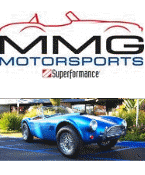


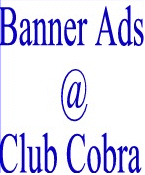




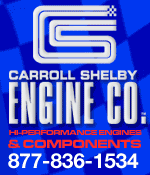







 Hybrid Mode
Hybrid Mode


